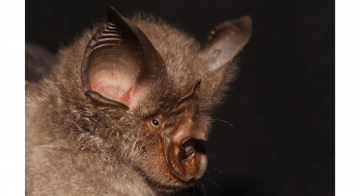Robert Bazell in Nautilus:
 Long before the first reports of a new flu-like illness in China’s Hubei province, a bat—or perhaps a whole colony of them—was flying around the region carrying a new type of coronavirus. At the time, the virus was not yet dangerous to humans. Then, around the end of November, it underwent a slight additional mutation, evolving into the viral strain we now call SARS-CoV-2. With that flip of viral RNA, so began the COVID-19 pandemic. As in almost every outbreak, the mutations that set off this global crisis went undetected at first, even though the family of coronaviruses was already known to cause a variety of human diseases. “These viruses have long been understudied and have not been given the attention or funding they have deserved,” Craig Wilen, a virologist at Yale University, told me.
Long before the first reports of a new flu-like illness in China’s Hubei province, a bat—or perhaps a whole colony of them—was flying around the region carrying a new type of coronavirus. At the time, the virus was not yet dangerous to humans. Then, around the end of November, it underwent a slight additional mutation, evolving into the viral strain we now call SARS-CoV-2. With that flip of viral RNA, so began the COVID-19 pandemic. As in almost every outbreak, the mutations that set off this global crisis went undetected at first, even though the family of coronaviruses was already known to cause a variety of human diseases. “These viruses have long been understudied and have not been given the attention or funding they have deserved,” Craig Wilen, a virologist at Yale University, told me.
A bat coronavirus caused the SARS outbreak that terrified much of the world and killed 774 people in 2002 and 2003 before it was contained. Since then, there have been regular flare-ups of Middle East respiratory Syndrome or MERS, caused by another bat coronavirus that passes through camels; since 2012, it has killed 884 people. Most research on potential pandemics nevertheless continued to focus on influenza viruses, such as bird flu, because they carry a significant annual death toll. COVID-19 is exposing the dangers of such a single-minded approach. A few scientists tried to sound the alarm. In a 2015 study, epidemiologist Ralph Baric and his colleagues at the University of North Carolina analyzed the genomes of bat coronaviruses and warned, “Our work suggests a potential risk of SARS-CoV re-emergence from viruses currently circulating in bat populations.”1 A second paper from the same group the next year warned that another SARS-like disease from bat coronaviruses was “poised for human emergence.”2 Bats are well known as a reservoir for potential new human diseases. The animals carry dozens, perhaps hundreds, of members of the coronavirus family. Most of those viruses are part of the bats’ normal microbiome, living in harmony with their hosts and causing no harm. But coronaviruses, like all forms of life, accumulate random genetic changes as they reproduce. Occasionally the mutations allow the viruses to infect other animals (including humans) and to score the big win in natural selection: producing ever-more descendants.
A win for the virus, that is. For us, not so much.
More here.
